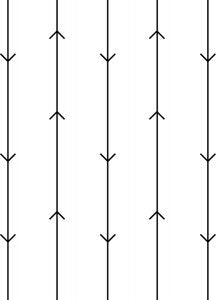How to Use Your Walking Foot to Quilt
Every once in a while, Missy has a project she needs finished and doesn’t have time to wait for Kimie to quilt it. However, Missy does not do free motion quilting. She loves all the other aspects of the project, but lets Kimie do that part. Luckily, there is a solution!
A walking foot can be a fabulous addition to your sewing machine. Not only can it help with piecing and keeping your fabric from shifting, you can also use your walking foot to quilt and finish your project with ease and accuracy.
In this weeks video, Missy shows you how to finish your projects using 4 different motifs, all done with your walking foot. You can use these on big or small projects to add variety and interest as you complete your quilts.
When quilting these designs, you can either maintain even spacing, or you can mix it up for even more variety. The quilting paths are pretty simple, and there is no need to break thread between the rows, just flip and keep going. The edge will be covered with binding, keeping all your threads contained.
Horizontal or Vertical Lines
This is likely the most common design in walking foot quilting and is a great way to get started. Simply sew down one side, then flip your quilt and sew back the opposite direction. If you are sewing a larger project, we recommend starting in the middle and working your way out from there, then when you finish the first half, go back to the middle to complete the second side. This will help reduce bulk under your sewing machine and make sure everything stays centered on your batting and backing.

Diagonal Echoes
This motif keeps you only ever working on a quarter of the quilt, making it nice for larger projects. There is a little marking at the beginning, however, to set your diagonal lines. The ability to minimize most of the fabric under your machine throughout the quilting makes it worth it though.

Alternating Diagonals
This design adds movement and interest to the finished top. The alternating diagonals bring in contrast to the finished piece. After you complete the first set, you’ll be tracing back over that line as you move between lines on the opposite side.

Checkerboard Lines
This design also only works on a quarter of the quilt at a time, but does require more turning. Like with the alternating diagonals, you’ll trace back over your foundation lines as you move around each side.

Even if you are new to quilting, you can use your walking foot to confidently finish your tops and get those UFOs off the shelf and wrapped around someone you love.
The Butterflies in Missy’s hotpads are linked below if you want to make some of your own. They aren’t our original design, but are made by other amazing quilters.


